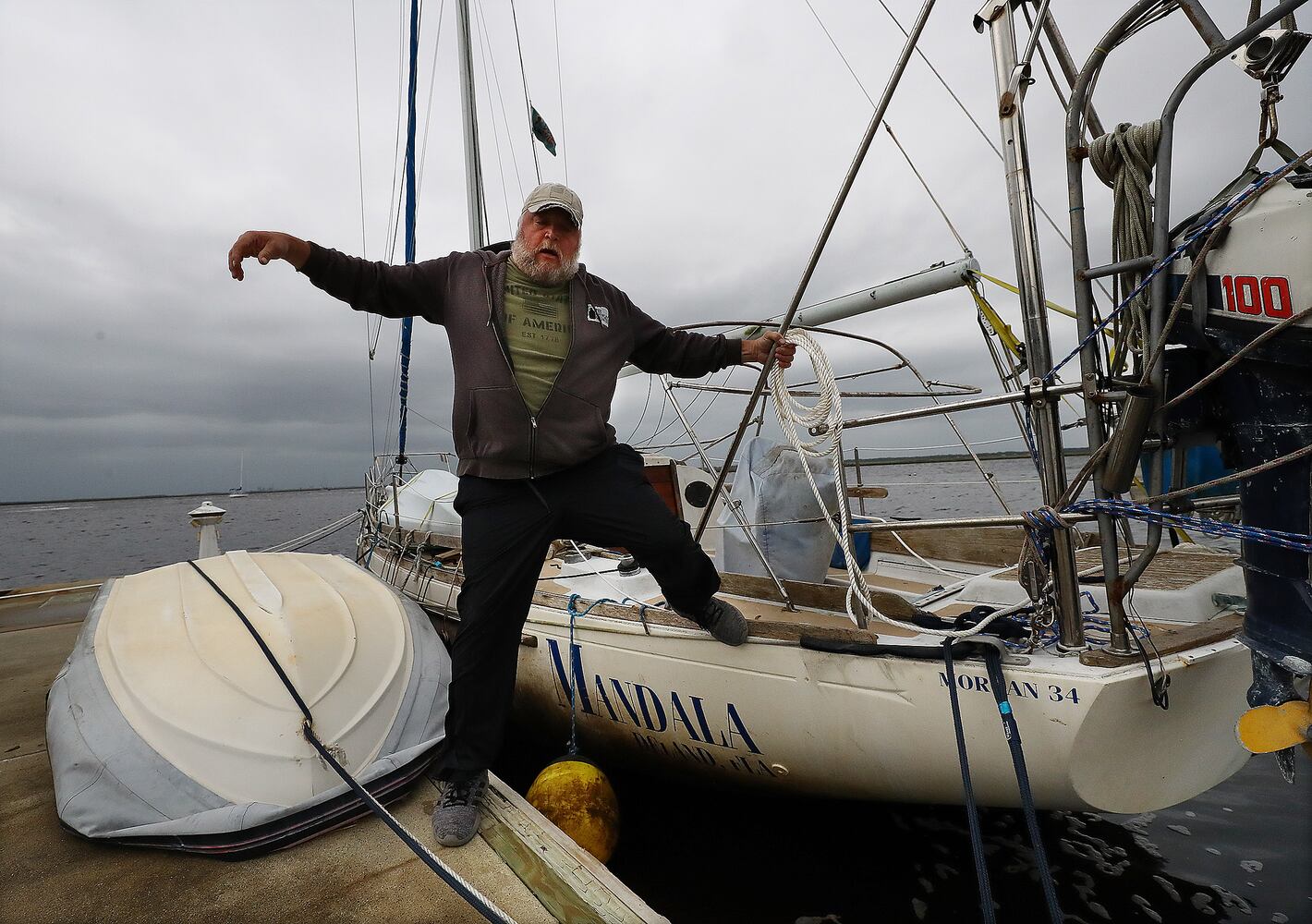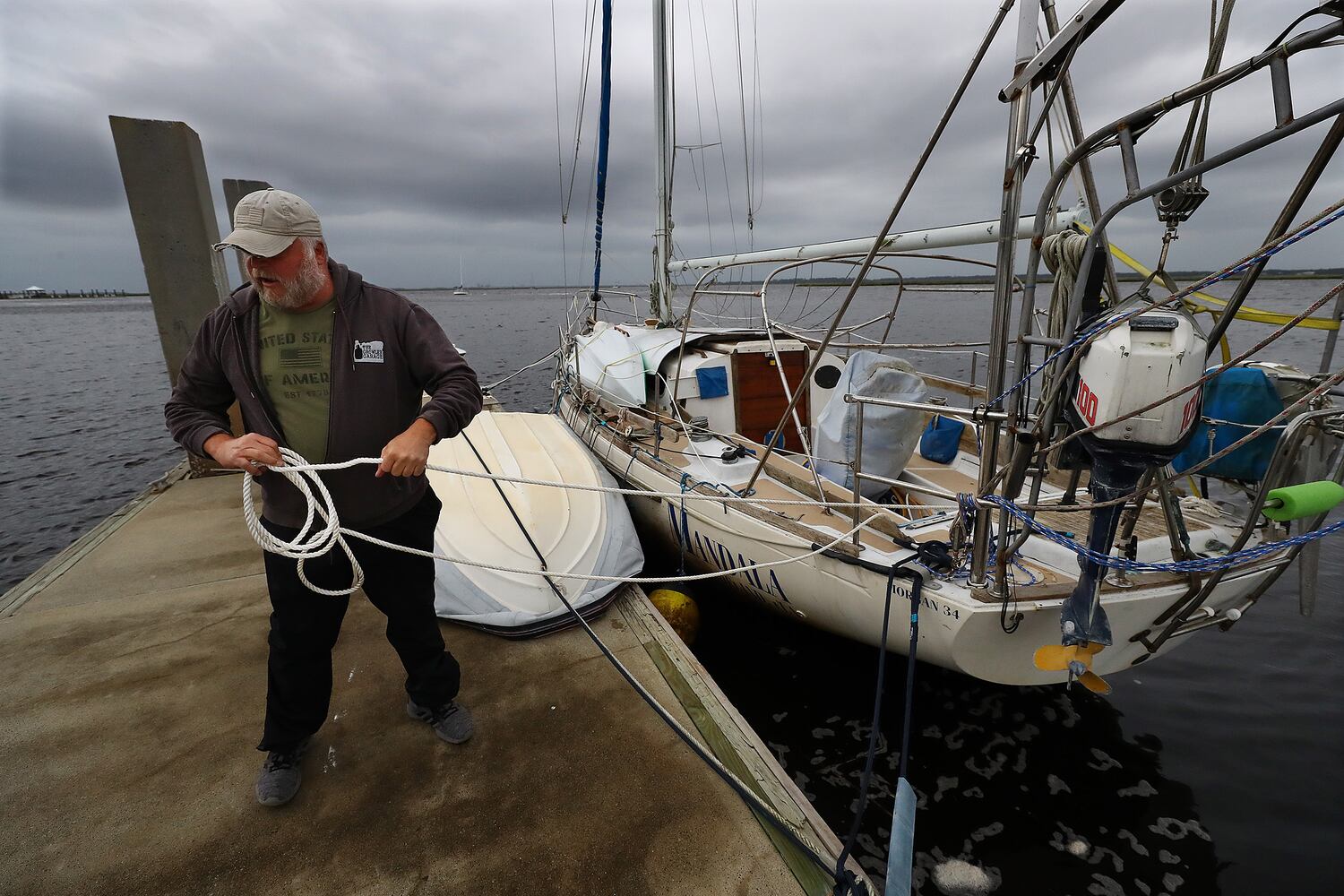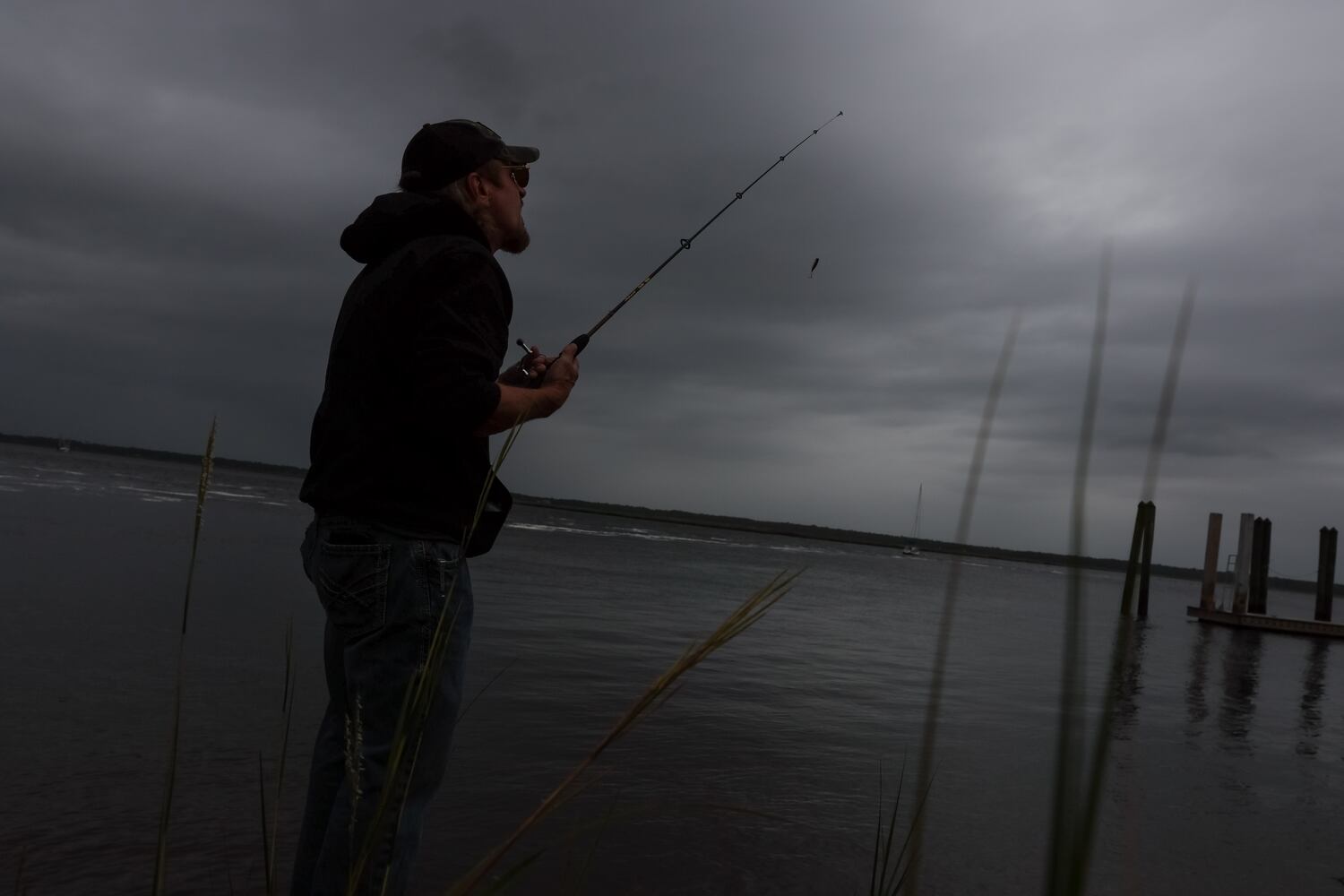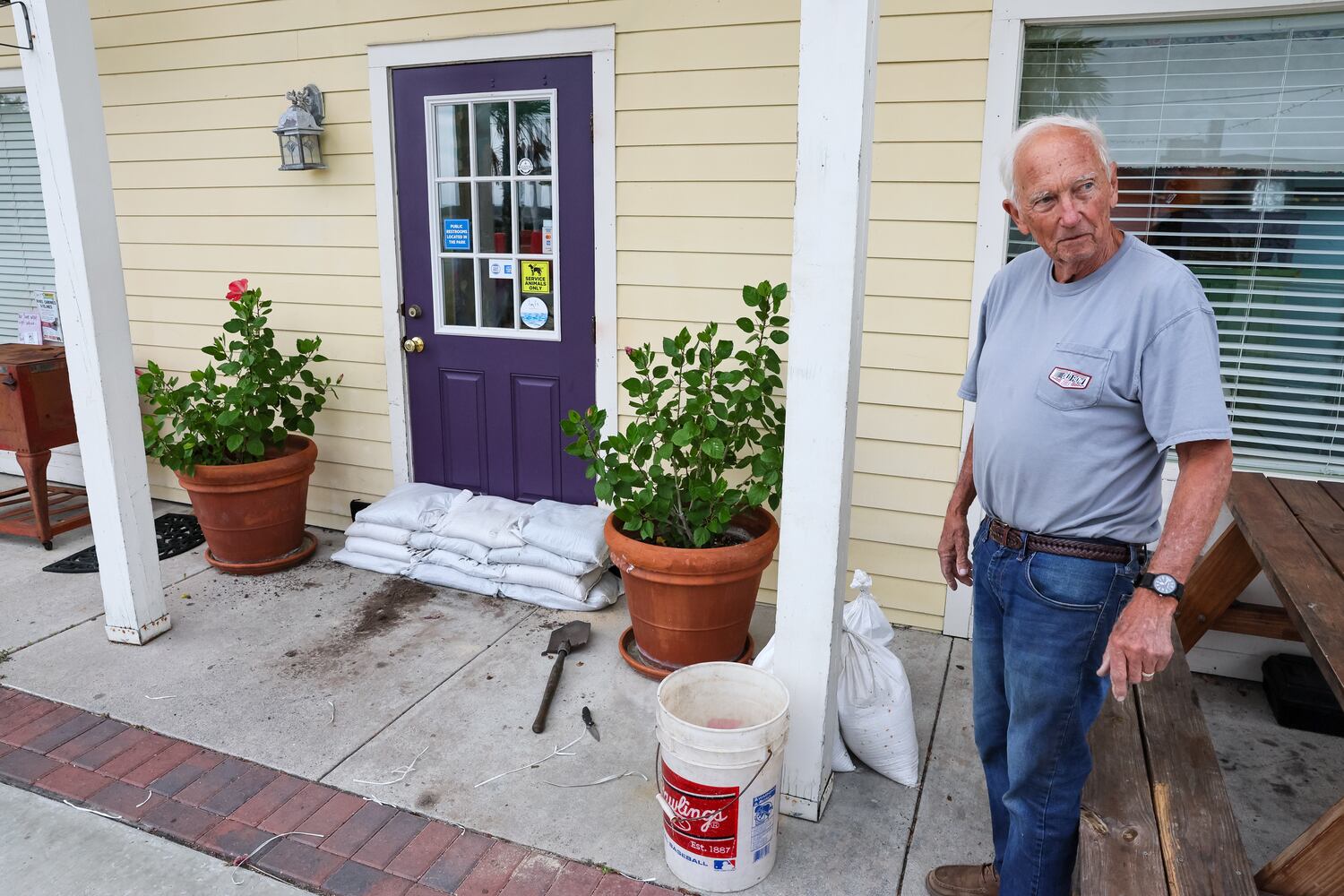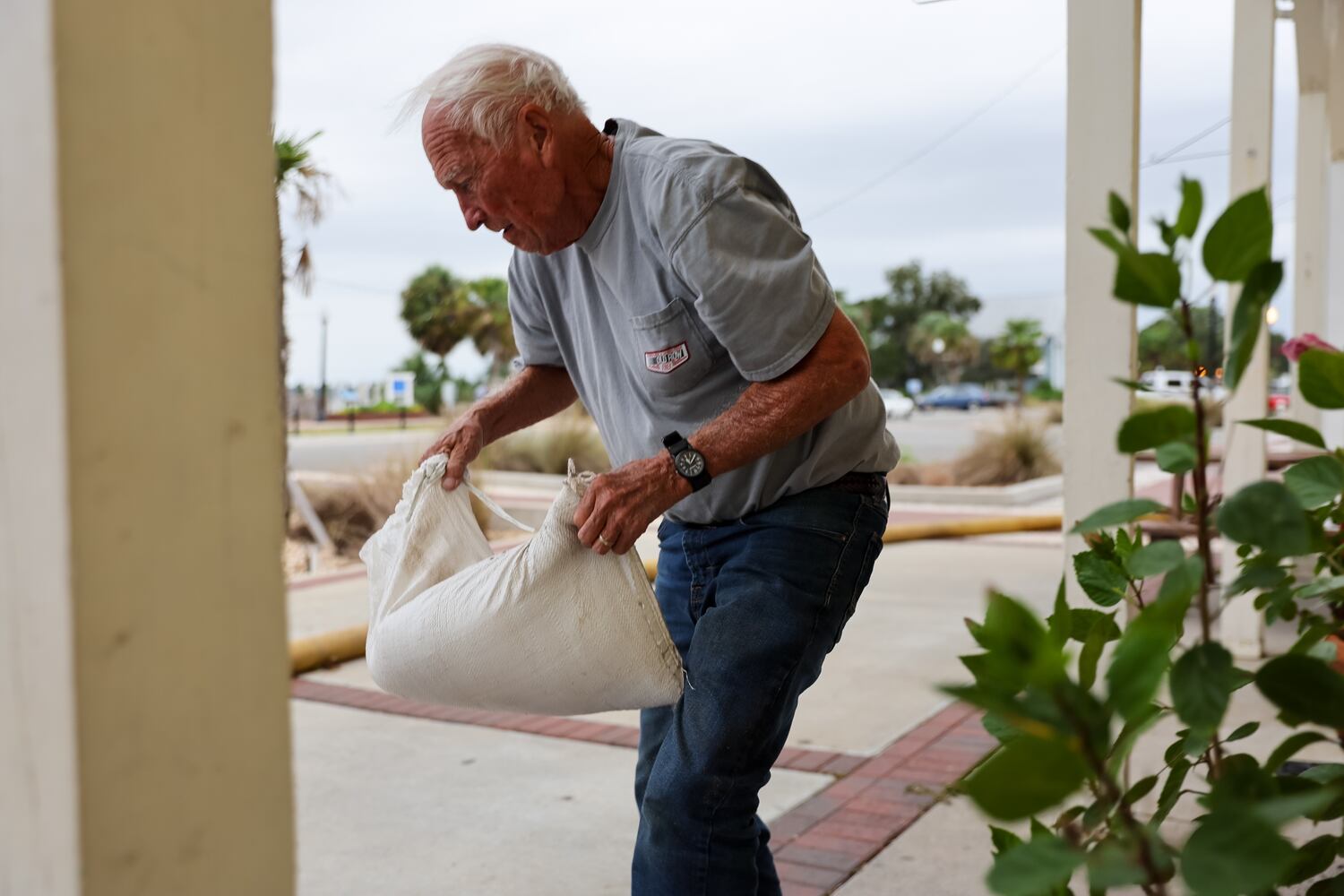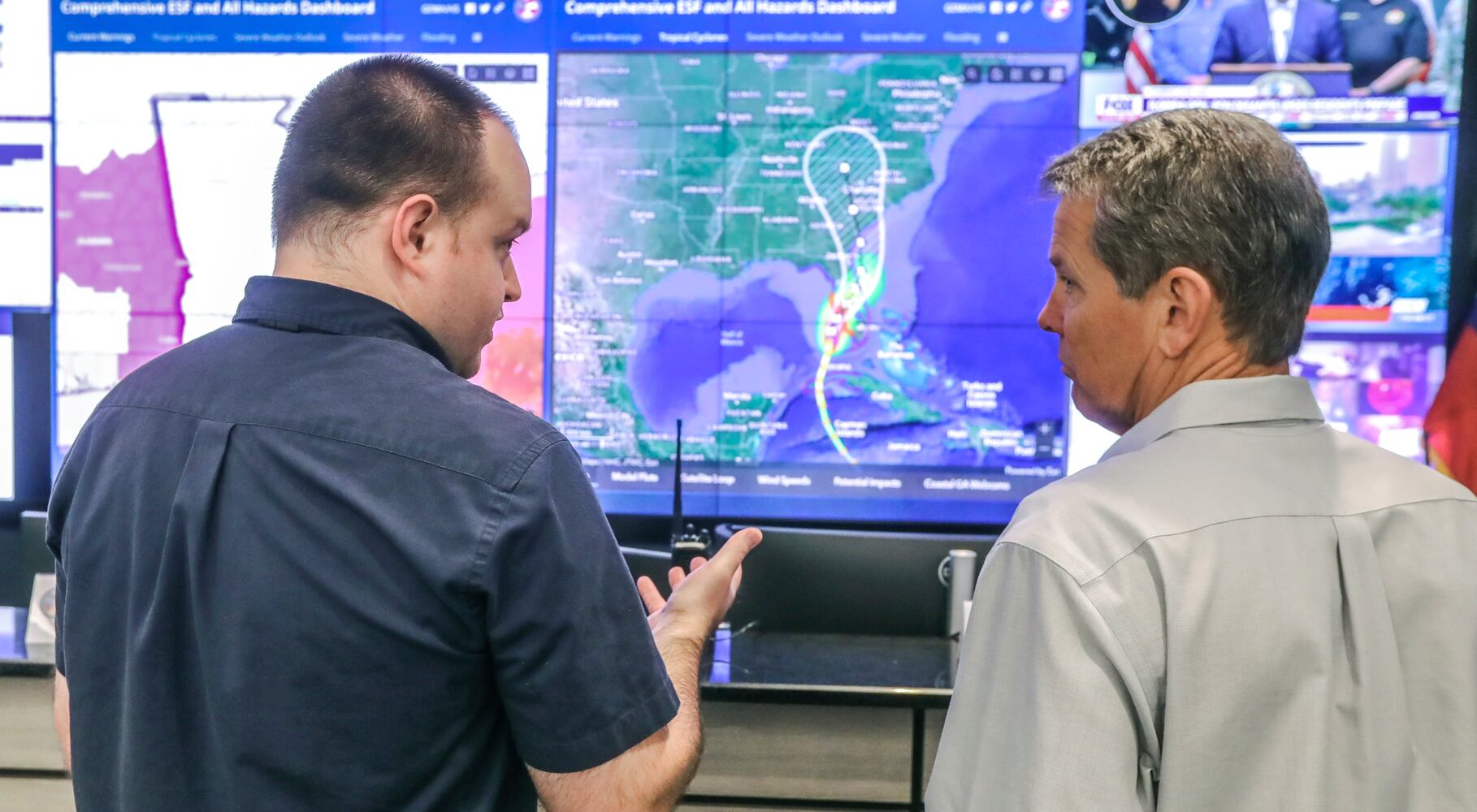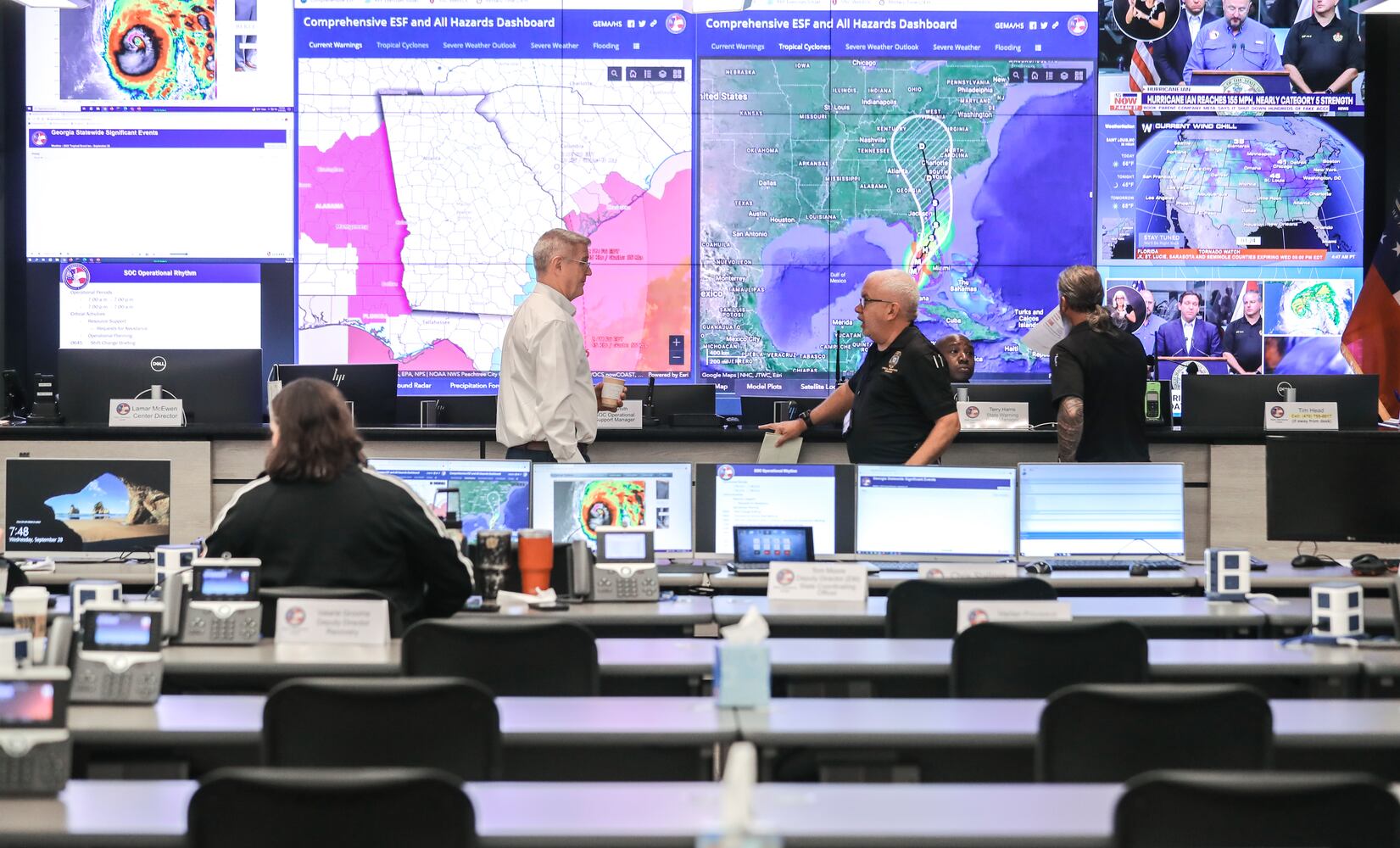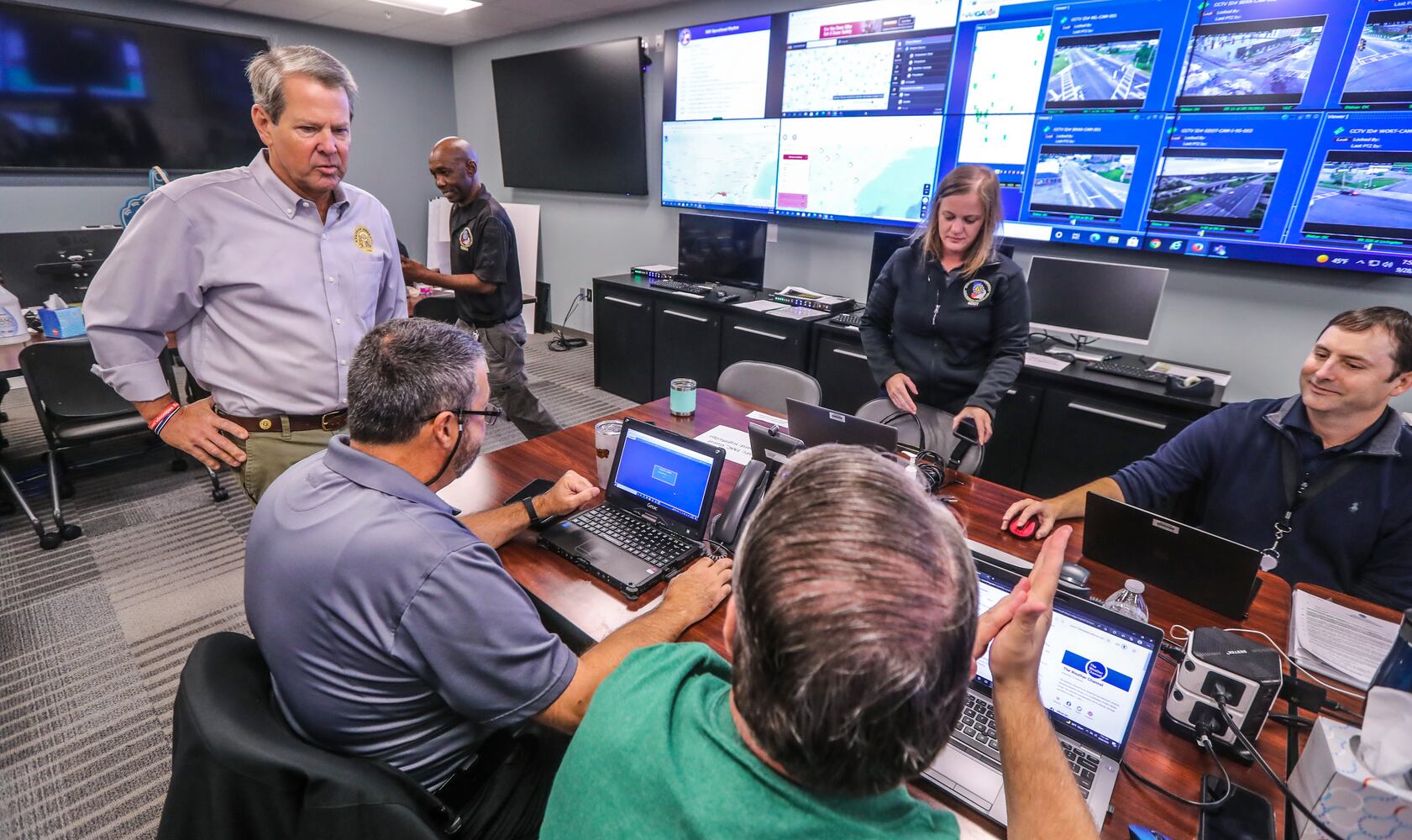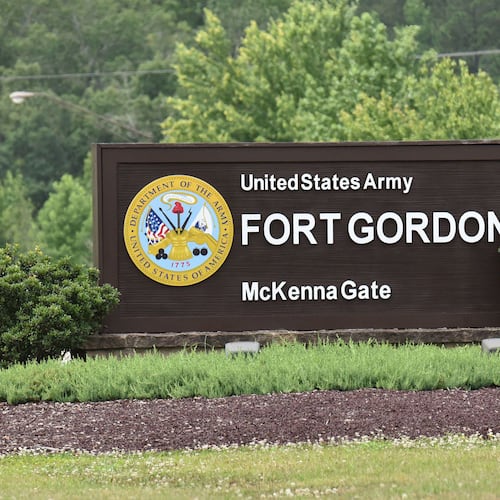Gov. Brian Kemp urged calm Wednesday as one of the strongest hurricanes in U.S. history pummeled Florida on its way to Georgia.
Hurricane Ian, which made landfall on Florida’s southwestern coast Wednesday afternoon with maximum sustained winds of 150 mph, is expected to weaken substantially before it exits Florida late Thursday. But forecasters said the storm could regroup over the Atlantic Ocean before coming ashore again Friday near Savannah.
Ian’s center hit land about 3 p.m. on Caya Costa, a barrier island west of downtown Fort Myers, and entered the mainland two hours later at Punta Gorda, about 25 miles north, according to the National Hurricane Center. Forecasters expected a 12- to 18-foot wall of water to surge over more than 250 miles of Gulf of Mexico shoreline. Although much of that is barely populated swampland, it also includes cities such as Naples, Fort Myers, Cape Coral and Port Charlotte.
Television images showed downed trees and flooded homes and streets throughout the region. Official damage estimates were not immediately available.
Inland areas of Florida braced for flooding, with as much as 2 feet of rain expected in parts of the state.
“This is going to be a nasty nasty day, two days,” Florida Gov. Ron DeSantis said Wednesday in Tallahassee. DeSantis had issued evacuation orders for about 2.5 million residents, and “while most people … did leave,” he said, “some people chose to stay.”
Recovery teams, DeSantis added, won’t be able to reach those who stayed behind until the storm passes.
Ian was the strongest storm to hit the United States since Hurricane Michael, which devastated parts of the Florida Panhandle in 2018 before causing widespread damage to South Georgia’s agriculture industry. Ian’s winds were exceeded only by Michael, hurricanes Andrew in 1992 and Camille in 1969 and by an unnamed storm that blasted the Florida Keys in 1935.
Ian’s impact on Georgia largely depends on its path after leaving Florida. The hurricane center said the storm’s center most likely will remain over the Atlantic as it passes Jacksonville and the southeastern corner of Georgia. But heavy storms associated with the storm extend as far as 300 miles from the center.
If current predictions hold, the storm would come ashore again in South Carolina, just north of Savannah, on Friday morning. Areas on a storm’s western side generally experience less severe impacts than those to the east, but strong weather still is likely.
Credit: Curtis Compton / Curtis.Compton@
Credit: Curtis Compton / Curtis.Compton@
Tropical storm and storm surge warnings cover Georgia’s entire 110-mile coastline. Winds there could exceed 70 mph by Friday, along with storm surges of 3 to 7 feet between St. Mary’s to Savannah.
The hurricane center predicted flooding on the state’s barrier islands, including St. Simon’s, Jekyll and Tybee. The strongest storm surge is expected in Savannah, where Mayor Van Johnson warned residents to be prepared to flee rising waters. He did not order evacuations, however.
Much of the rest of Georgia will see “extended periods of wind gusts” of more than 30 mph and 1 to 4 inches of rain by Saturday, according to the National Weather Service office in Peachtree City.
Credit: JOHN SPINK / AJC
Credit: JOHN SPINK / AJC
Kemp, who conferred with officials at the state’s emergency operations center in Atlanta, said Georgia is prepared to ride out the storm.
“We are ready,” he said. “We are continuing to watch. There is no need to panic in the state of Georgia right now.”
The state’s transportation agency announced that the South Metro Express Lanes on I-75 in Clayton and Henry counties will remain northbound-only until the storm passes. The agency also suspended road work requiring lane closures along I-16, I-95 and I-75 south of Atlanta.
Officials suggested that residents of low-lying areas along the Georgia coast move to higher ground, but Kemp has not ordered evacuations.
“We haven’t gone there yet,” he said. If conditions worsen, “we’ll do that very quickly and let people know.”
The strong weather in Florida and uncertainty in Georgia prompted Atlanta-based Delta Air Lines to halt operations at Tampa, Sarasota and Fort Myers airports on Tuesday evening, giving it time to move aircraft and crews out of the hurricane’s path. It suspended flights in Orlando on Wednesday. Delta and other airlines canceled more than 100 flights at Hartsfield-Jackson International Airport on Wednesday, according to FlightAware.com.
Credit: Natrice Miller / Natrice.Miller@ajc.com
Credit: Natrice Miller / Natrice.Miller@ajc.com
Georgia Power is closely watching the storm’s path and intensity from its storm center in downtown Atlanta.
Preparations that started days ago to move response teams and resources to designated staging areas were continuing, said Ryan Poole, the storm center’s operations manager.
“What we’re focused on is watching that path and making sure that with each update we get from meteorologists, we can adjust and plan accordingly,” Poole said.
After the storm clears Georgia, state insurance officials plan to help protect residents of affected areas from fraud and shoddy repairs, Insurance Commissioner John King said.
“Once we identify an area of the state that has been affected, we move to that area,” King said. “We bring customer service representatives, we bring investigators to go and help people not only file their claims but also prevent fraudsters from coming into the community.”
Staff writers Greg Bluestein, Jozsef Papp, Drew Kann, Kelly Yamanouchi, Chelsea Prince and David Wickert and The Associated Press contributed to this report.
About the Author
Keep Reading
The Latest
Featured
